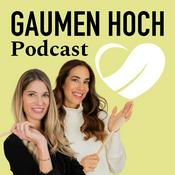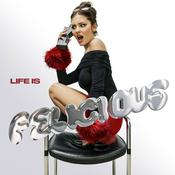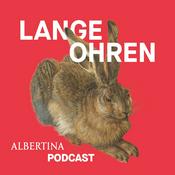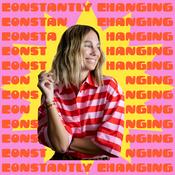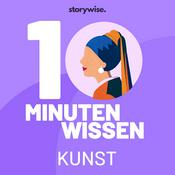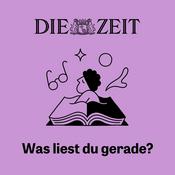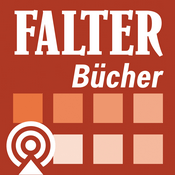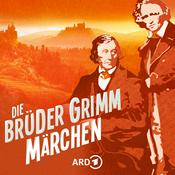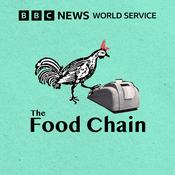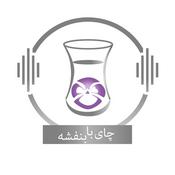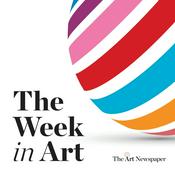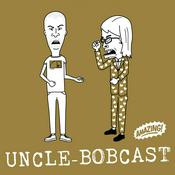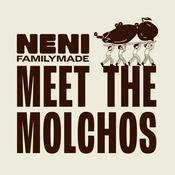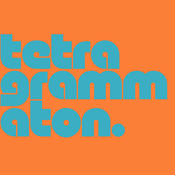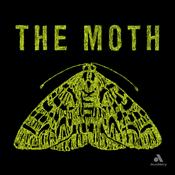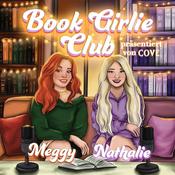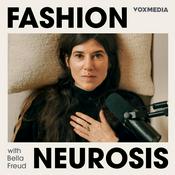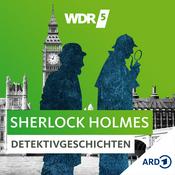76 Episoden

An Architectural Answer to how Cities can Turn Down the Heat
18.12.2025 | 32 Min.
What if a powerful climate solution in cities isn’t a new building, but the roof that’s already there? As heat waves intensify across Europe, architect and MIT-trained educator Olivier Faber explains how his firm, Roofscapes is transforming overlooked rooftops into cooling, accessible, green infrastructure. Starting with Paris’s iconic zinc roofs, the conversation unpacks why existing buildings are misaligned with today’s climate, how shading and vegetation can dramatically reduce indoor temperatures without air conditioning, and why renovation and adaptation may matter more than new construction in the decades ahead. Along the way, Olivier reveals the political, technical, and cultural battles behind testing climate solutions in historic cities, and why climate adaptation is about changing how we value the buildings we already have.Thumbnail Image courtesy of RoofscapesSubscribe to Most Podern on:Spotify - https://open.spotify.com/show/3zYvX2lRZOpHcZW41WGVrpApple Podcasts - https://podcasts.apple.com/us/podcast/most-podern-podcast/id1725756164Youtube - https://www.youtube.com/@MostPodernInstagram - https://www.instagram.com/most.podernLinkedIn - https://www.linkedin.com/company/most-podernKeywordsarchitecture, climate change, renovation, urban design, sustainability, Roofscapes, green roofs, preservation, adaptation, building practices, Paris, urban design, heat island effectChapters00:00 Background and Journey into Architecture00:51 Exploring Alternative Architecture Practices03:52 Introducing Roofscapes and Its Mission06:17 Physical Adaptation: Before and After07:16 The Challenges of Zinc Roofs in Urban Design10:29 Innovative Solutions for Urban Heat Management11:34Pitching Green Roof Solutions to Building Owners14:08 Navigating the Complexities of Building Regulations17:14 Measuring the Impact of Climate Adaptation Projects24:09 Future Directions for Climate Adaptation in ArchitectureLinksOlivier Faber - https://www.linkedin.com/in/olivier-faberRoofscapes - https://www.roofscapes.studio/MITx - https://mitxonline.mit.edu/

A New Era for Sprawl
10.12.2025 | 41 Min.
The American suburban dream is unsustainable—but we're not giving up on it.David Kooris, Executive Director of the Connecticut Municipal Development Authority and lecturer at Yale, explains why sprawl no longer works as an economic engine and how we can retrofit existing suburbs to be more prosperous, walkable, and sustainable.In this episode, we explore:✓ Why the suburban development model is fiscally unsustainable✓ How to transform aging strip malls into thriving town centers✓ The art of community engagement that builds consensus (not opposition)✓ Why making car-dependent places walkable has more impact than you think✓ Planning concepts everyone should understand about their built environmenthttps://www.wearecmda.com/Chapters00:00 The Impetus for Urban Planning00:00 Understanding the Role of Municipal Development00:00 Examples of Community Engagement00:00 David Kooris's Background and Insights00:41 The Importance of Long-Term Planning00:41 Retrofitting Suburban Landscapes00:41 Strategies for Community Improvement00:41 Engaging Future Residents in Development Conversations00:41 The Importance of Diverse Stakeholder Engagement00:41 Overcoming Community Resistance to Change00:41 Planning 101: Essential Concepts for Community Engagement00:41 Understanding the Complexities of the Built Environment00:41 Streamlining Community Engagement in Planning00:41 Innovative Approaches to Municipal Development00:41 Reflecting on the Current Era of Urban Planning

Planning Coachella - Reiko Wei
03.12.2025 | 35 Min.
What hidden design choices make a 125,000-person festival feel effortless—and what happens when being off by just one foot throws everything into chaos? Why do some festivals become cultural icons while others collapse spectacularly? And how did one architect watching the Fyre Festival documentary suddenly realize, “I could do this a million times better”—and then actually go do it?In this episode, Reiko Wei, design production manager at Goldenvoice (the team behind Coachella & Stagecoach), pulls back the curtain on the invisible systems, political negotiations, spatial puzzles, and human-centered decisions that shape the world’s most iconic music festivals. She reveals how a show built on 1200 acres needs precision down to a single foot, why the fire marshal has the ultimate power, how Gen Z is reshaping festival culture, and why physical spaces for real connection matter more than ever in a post-COVID world.If you’ve ever wondered how a “giant party” becomes a safe, seamless, deeply human experience—or why these events still matter—this conversation will change how you see every festival you attend.https://goldenvoice.com/https://www.coachella.com/https://www.stagecoachfestival.com/Chapters00:00 Understanding Coachella: The Festival Experience03:19 The Role of Logistics in Event Planning06:41 Reiko's Transition from Architecture to Event Planning10:10 Collaboration with Authorities and Stakeholders13:35 The Evolution of Coachella: Adapting to Change17:00 Designing for Experience: The Importance of Flow21:15 The Art of Curation in Festivals25:02 Shifting Audience Dynamics Post-COVID27:11 The Importance of In-Person Connections30:43 Navigating Loneliness and Community31:51 Reflections on the Current Era

America can't Build. Can Modular Construction be the Answer?
26.11.2025 | 46 Min.
How do we build faster, smarter, and more affordably in a world running out of patience and running short on skilled labor? Tom Hardiman, Executive Director of the Modular Building Institute, joins Alex Yuen and Libo Li to explain how modular construction can reshape the built environment. From cutting construction timelines in half to reducing waste and expanding access to housing, Tom shows why modular is not a trend but a practical tool for a more sustainable, efficient, and inclusive future. The conversation unpacks the realities behind factory based building, the politics that slow adoption, and how modular can help cities facing affordability and capacity challenges.Subscribe to Most Podern on:Spotify - https://open.spotify.com/show/3zYvX2lRZOpHcZW41WGVrpApple Podcasts - https://podcasts.apple.com/us/podcast/most-podern-podcast/id1725756164Youtube - https://www.youtube.com/@MostPodernInstagram - https://www.instagram.com/most.podernLinkedIn - https://www.linkedin.com/company/most-podernKeywordsmodular construction, prefab housing, offsite construction, Modular Building Institute, MBI, Tom Hardiman, affordable housing solutions, housing crisis, construction technology, manufacturing in construction, sustainable building, prefabricated buildings, industrialized construction, factory-built homes, housing innovation, construction efficiency, future of construction, how to build faster, Most Podern podcastChapters00:00 Introduction to Modular Construction00:53 Defining Modular Construction02:02 Benefits of Modular Construction04:59 The Ecosystem of Modular Construction06:51 Coordination in Modular Projects08:20 Cost Considerations in Modular Construction09:53 The Importance of Time in Construction11:30 Architects and Modular Construction12:53 Successful Modular Projects14:38 Addressing Design Concerns in Modular Construction17:32 Standardization vs. Customization19:45 Regulatory Challenges in Modular Construction20:50 Education and Resources for Modular Construction21:13 The Role of Education in Modular Construction24:27 Attracting Young Talent to Modular Construction28:32 Barriers to Adoption of Modular Construction30:56 Navigating Politics and Labor Relations34:51 Integrating Traditional and Modular Construction37:52 The Future of Modular Construction40:12 Upcoming Events and Community EngagementLinksTom Hardimanlinkedin.com/in/tomhardimanModular Building Institute (MBI)https://www.modular.org/World of Modular Conferencehttps://www.modular.org/wom/MBI Research and Resourceshttps://www.modular.org/resources/

Why Affordable Housing Isn’t Affordable
11.11.2025 | 26 Min.
Why does building “affordable” housing cost so much in the built environment? From land prices to loan rates, construction inflation to endless permitting, Alex and Libo break down the true costs of creating homes and why the system often works against the very people it is meant to help. They unpack how financing, regulation, and risk collide, what makes America’s housing model unique, and what simple reforms could unlock more livable and affordable cities for everyone.Subscribe to Most Podern on:Spotify - https://open.spotify.com/show/3zYvX2lRZOpHcZW41WGVrpApple Podcasts - https://podcasts.apple.com/us/podcast/most-podern-podcast/id1725756164Youtube - https://www.youtube.com/@MostPodernInstagram - https://www.instagram.com/most.podernLinkedIn - https://www.linkedin.com/company/most-podernKeywordsaffordable housing crisis, built environment, housing policy, real estate development, construction costs, architecture, urban design, cities, zoning reform, housing finance, interest rates, pro forma explainedChapters00:00 Understanding Affordable Housing Costs02:29 The Role of Pro Forma in Housing Development05:49 Financing Affordable Housing Projects09:58 Impact of Rising Costs on Housing Development16:18 Government's Role in Affordable Housing20:29 Streamlining the Permitting Process23:13 Changing Perspectives on Housing Development
Weitere Kunst Podcasts
Trending Kunst Podcasts
Über Most Podern Podcast
Höre Most Podern Podcast, GAUMEN HOCH – Übers Essen spricht man nicht und viele andere Podcasts aus aller Welt mit der radio.at-App
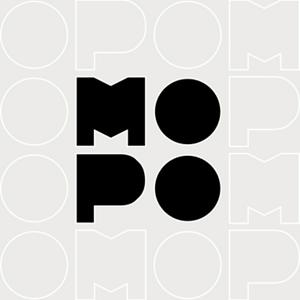
Hol dir die kostenlose radio.at App
- Sender und Podcasts favorisieren
- Streamen via Wifi oder Bluetooth
- Unterstützt Carplay & Android Auto
- viele weitere App Funktionen
Hol dir die kostenlose radio.at App
- Sender und Podcasts favorisieren
- Streamen via Wifi oder Bluetooth
- Unterstützt Carplay & Android Auto
- viele weitere App Funktionen


Most Podern Podcast
App laden,
loshören.
